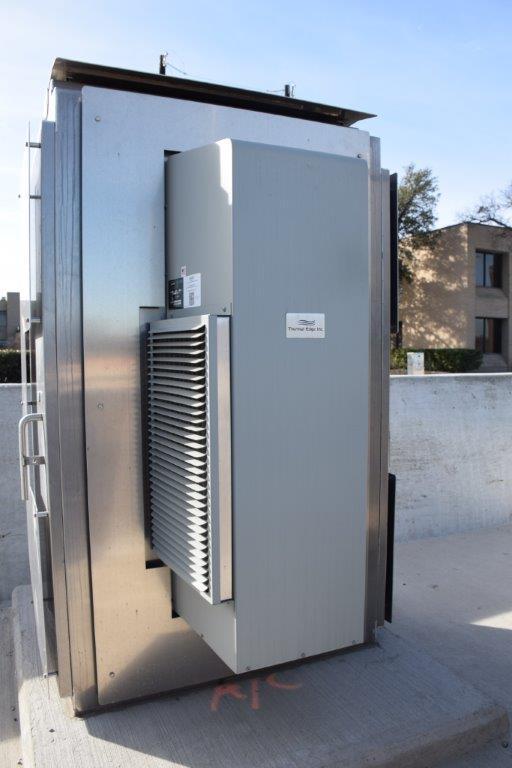Selecting a Weatherproof Electrical Enclosure & Cooling System
 The selection of a weatherproof electrical enclosure needs to be made with care because the definition of weatherproof under article 100 of the National Electrical Code requires that exposure to weather must not affect the operation of the enclosure. Such a definition requires further interpretation when considering enclosures and cooling systems to be installed in locations exposed to harsh weather. There are significant differences in weather conditions between coastal marine locations, wet tropical environments, deserts, and cold climates.
The selection of a weatherproof electrical enclosure needs to be made with care because the definition of weatherproof under article 100 of the National Electrical Code requires that exposure to weather must not affect the operation of the enclosure. Such a definition requires further interpretation when considering enclosures and cooling systems to be installed in locations exposed to harsh weather. There are significant differences in weather conditions between coastal marine locations, wet tropical environments, deserts, and cold climates.
NEMA Requirements
Once weather conditions have been assessed, an enclosure with an appropriate NEMA rating should be selected. Typically, a weatherproof enclosure would be expected to have a minimum NEMA 3R rating. For those who are familiar with IP ratings, the comparison chart provided by NEMA will assist in the selection of an appropriate rating, and, depending upon the degree of protection required, other suitable weatherproof ratings include NEMA 4 or 4X.
Harsh Weather Environments
The rating of the enclosure and cooling package is dependent upon the weather experienced and the location of the enclosure. It’s important to remember the enclosure interior should not be allowed to become damp as this may harm sensitive electronic equipment such as PLCs, power supplies, HMIs, and back-up batteries.
The following points ought to be considered:
- Rainfall: Annual rainfall patterns including intensity of storms
- Relative humidity: Humid environments cause dampness and condensation
- Wind: High winds can blow water through ventilation holes
- Dust: Ingress of dust in desert environments
- Marine: In areas close to the coast, air contains relatively high levels of salt
Cooling Weatherproof Naturally Ventilated Enclosures
Naturally ventilated enclosures may be used provided they are weatherproofed and not exposed to driving rain and spray. However, care must be taken to ensure that such enclosures do actually provide adequate protection and they would normally require a minimum NEMA 3R rating.
As modern electrical equipment generate higher degrees of heat, it’s likely that the total heat load, comprising the heat generated by the equipment and the effect of solar radiation, will result in unwarranted enclosure temperatures unless the excess heat is removed by forced ventilation. Because these enclosures are subject to rain and wind, ventilation fans should be fitted with shrouds to prevent water ingress and to maintain a NEMA 3R enclosure rating.
Sealed Enclosures Are More Weatherproof
Although ventilated enclosures are weatherproof to a certain degree, a more robust solution that provides a greater degree of protection is the use of sealed enclosures built to NEMA 4 standards.
Cooling Sealed Enclosures
Weatherproof sealed enclosure cooling systems must maintain the integrity of the sealed enclosure and not permit air or water leakage into the enclosure. This can be achieved in three ways: with a sealed air to air heat exchanger, an air to water heat exchanger, or by means of an enclosure air conditioner.
- A sealed air to air heat exchanger may use heat pipe technology to remove heat from the enclosure and discharge it to the environment. These are very effective for smaller heat loads and where the ambient temperature is not excessive.
- An air to water heat exchanger is ideal for high ambient conditions and tough industrial environments. Air to water heat exchangers provide contaminant-free cooling while minimizing energy use and maintenance cost.
- Enclosure air conditioner: A sealed enclosure air conditioner is well suited to high heat loads and hot environments such as can be found in hot humid locations.
If you need any information regarding weatherproof enclosure cooling systems, Thermal Edge’s Sales Team can provide you with professional advice on selecting the best weatherproof solution for your application.

